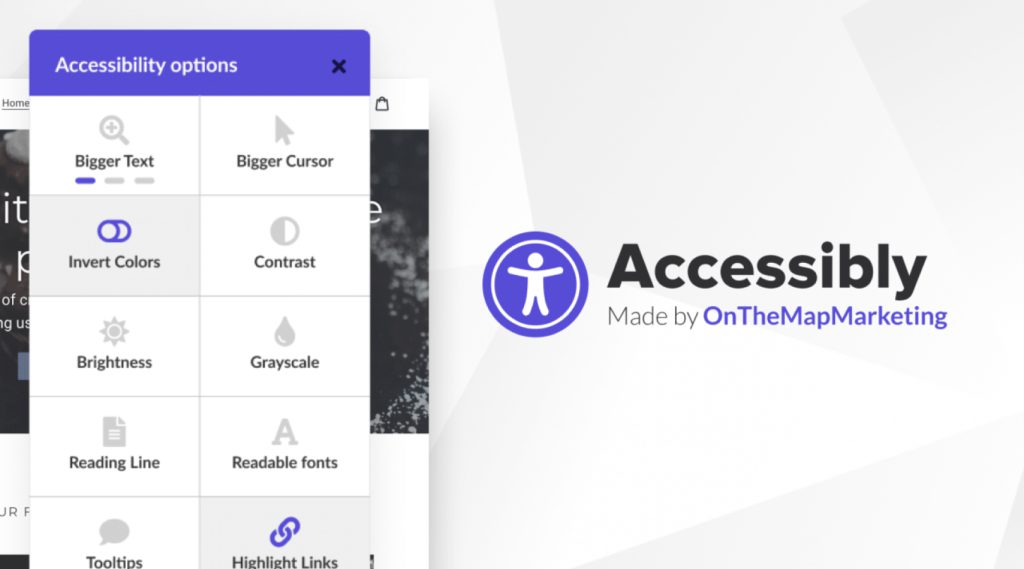Web accessibility is not a new concept, but it is now more relevant than ever, with almost 2 billion people living with disabilities worldwide and relying on the web for information, education, and more. But how many websites actually follow the web accessibility standards and guidelines? How well are we really doing to make the web user-friendly for everyone? How many users with disabilities face barriers when accessing online content? These are some of the questions that the following statistics can help us answer.
Percentage of websites with accessibility issues
- Over 96% of the world’s top one million web pages are not accessible. This means less than 4% of the most popular websites are capitalizing on the disability market, which is largely underserved and growing. (Source: WebAIM)
- The average number of detectable accessibility errors per website home page is 50.8. The most common errors are low-contrast text, missing alternative text for images, empty links, missing form input labels, and empty buttons. (Source: WebAIM)
- 98% of websites don’t comply with the Web Content Accessibility Guidelines (WCAG) version 2.1. (Source: AccessiBe)
- 22.1% of all images on website home pages don’t have alt text, which is essential for screen reader users. (Source: WebAIM)
- A WCAG 2.1 accessibility audit of the Fortune 100 corporate websites revealed 815,600 accessibility issues, most of which were Level A issues. This indicates that Fortune 100 companies are not meeting the minimum standards for accessibility compliance. (Source: Ovum)
- 70% of websites in the government, news, and e-commerce categories are inaccessible to vision-impaired users. (Source: Nucleus Research)
- Nearly half of the people with disabilities surveyed by WebAIM reported that web content accessibility did not improve in the past year. (Source: WebAIM)

Impact of inaccessible websites on users
- 16% of the world’s population has some kind of disability. This translates to nearly 1.3 billion people who may need assistive tools and technologies to access online content. (Source: World Health Organization)
- In the US, up to 1 in 4 (27%) adults have some type of disability. The most common types of disabilities are mobility (12.1%), cognition (12.8%), hearing (6.1%), vision (4.8%), and independent living (7.2%). (Source: Centers for Disease Control and Prevention)
- 15% of disabled people say they “never” go online. This is compared to 5% of those without a disability who say the same. (Source: Pew Research Center)
- 70% of disabled online shoppers are forced to click away from a website they find difficult to navigate. Inaccessible websites cost UK retailers £17.1 billion in lost revenue in 2019. (Source: Click-Away Pound)
- People with disabilities spend $490 billion annually in the US. (Source: American Institutes for Research)
- 61% of users are unlikely to return to a site on mobile if they have trouble browsing it, and 79% visit a competitor’s site instead. (Source: Mckinsey)
Global awareness and adoption of web accessibility
- As of 2023, less than 20 countries (outside of the US) have adopted WCAG 2.0 as their national standard for web accessibility. Some of these countries include Australia, Canada, France, Spain, Germany, India, Japan, and the UK. (Source: Whois Accessible)
- Only 28.6% of professionals have reported actively implementing web accessibility for at least 3 years. This WebAIM survey also found that less than 54% of these professionals ever test their work for mobile users. (Source: WebAIM)
- 48% of the most popular federal websites in the US don’t meet basic standards for accessibility. (Source: Information Technology and Innovation Foundation)
Number of online users with disabilities and their web accessibility needs
- There are over 84 million disabled internet users in the US, out of which only 26% have access to high-speed internet. (Source: Pew Research Center)
- About 12% of the American population over 40 years of age has moderate to severe vision impairment, which affects their ability to read and access visual content online. (Source: CDC)
- More than 2.2 billion people worldwide have visual impairments, which means over 27% of the global population can benefit from using screen readers to navigate the web. (Source: Microsoft)
- Over 430 million people worldwide have disabling hearing loss. According to the World Health Organization, it is estimated that 1 in every ten people will have disabled hearing by 2050, impacting their ability to access audio content. (Source: WHO)
- Voice assistants are becoming increasingly popular among hearing-impaired users. An estimated 46% of adults in the US use voice-controlled digital assistants regularly, and this percentage is higher among those with visual or motor impairments. (Source: Pew Research Center)
- 2.5 billion people need of at least one assistive product, such as a wheelchair or a mobile app that supports communication. (Source: WHO)
- 14% of all American students who attend public schools need some type of assistive technology for their academic endeavors. (Source: National Center for Education Statistics)
Benefits of web accessibility for businesses
- Companies that prioritize accessibility and provide ADA-compliant internet access are four times as likely to outperform their competitors in total shareholder returns. (Source: Accenture)
- Digital products that fully comply with WCAG 2.0 are expected to have a 50% higher market performance than their competitors. (Source: Gartner)
- Accessible websites have a positive impact on search engine rankings. By complying with accessibility standards, businesses can improve their website’s SEO and reach a broader audience. (Source: ADA)
- In 2022, 2,387 digital accessibility-related lawsuits were filed in the United States under the Americans with Disabilities Act. (Source: Accessibility)
- 51% of consumers are willing to pay more for products or services from businesses that prioritize web accessibility. (Source: CapTech)
- Businesses could unlock a market of $13 trillion by embracing disability inclusion, with web accessibility being a crucial component of this strategy. (Source: Forbes)
- 20% of the top online retailers in the US faced accessibility-related lawsuits in 2022. By adhering to WCAG 2.1 guidelines for creating online content, you can address each commonly detected accessibility issue and prevent the risk of being sued. (Source: Digital Commerce 360)
What Do These Web Accessibility Statistics Mean for You?
These numbers reveal a shocking reality: many websites still neglect the accessibility needs of their users, especially those with disabilities. There is also an increasing trend of digital accessibility lawsuits and web accessibility lawsuits to challenge the failure of website accessibility in many businesses. Even leading shopping sites and popular federal websites sometimes fail to meet the standards of accessibility.
But the website accessibility statistics also reveal a huge opportunity for web accessibility practitioners. By making your website and online content more accessible, you can make it stand out from the crowd and reach more people. If your website is not accessible, you are not only turning away millions of potential customers for e-commerce transactions but also exposing yourself to legal risks and negative publicity that can harm your brand’s reputation.
In 2019, Beyoncé’s company Parkwood Entertainment was sued by a blind woman who claimed that her website violated the ADA by denying visually impaired users equal access to its services. The lawsuit alleged that the website lacked features such as alternative text, accessible drop-down menus, and keyboard navigation that are essential for screen reader users. The point is, no matter how global or popular your brand is, it’s not immune to the consequences of web accessibility negligence and digital accessibility complaints.
The statistics mentioned above are not just dry data that you can glance over and forget. They are powerful narratives that show the challenges a major part of the population experiences when seeking accessible sites and accessibility features. Think of them as valuable lessons to help you improve your site’s usability for everyone, and you will be rewarded with customer loyalty.

Accessibly: The #1 Solution for Increasing ADA & WCAG Compliance on Your Website
How can you make your website more accessible (and avoid the risk of ADA-related lawsuits) without spending too much time, money, or effort? How can you ensure that your website is closest to meeting the standards and guidelines of web accessibility, such as WCAG 2.1, ADA, Section 508, and EN 301549?
The answer is simple: Accessibly.
It’s an easy-to-use widget specifically designed to improve website accessibility across all major platforms, including WordPress, Shopify, WooCommerce, and Magento. With just a few clicks, you can now add the following features to your site:
- Text to voice: To read the content of your page to visitors.
- Make the site readable: To add reading lines, tooltips, and readable fonts.
- Enlarge content: To enlarge the cursor or add bigger text.
- Adjust colors: To change brightness, contrast, grayscale, and invert colors.
Accessibly is more than a tool, it’s your web accessibility partner. Installing it can help you avoid legal troubles by complying with the ADA’s Section 508, which can result in hefty fines and expensive litigation if violated. It can also help you stay updated with the latest web accessibility trends and best practices.
You don’t have to take our word for it – sign up for a FREE 7-day trial today and see the difference Accessibly can make for your website.




![Image for 5 Ways to Make Your WordPress Website More Accessible [+ With code examples!] post](https://accessiblyapp.com/app/uploads/2022/12/5-Ways-to-Make-Your-WordPress-Website-More-Accessible-With-code-examples.jpg)
